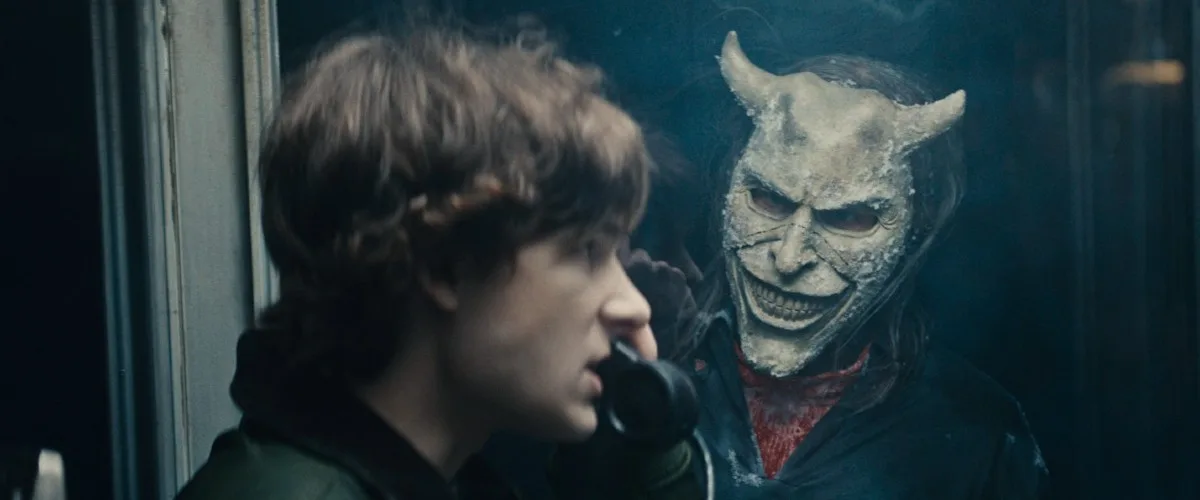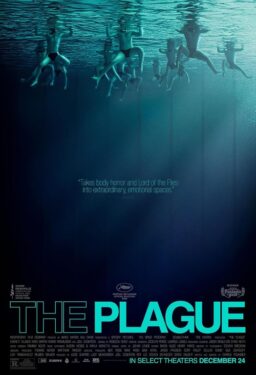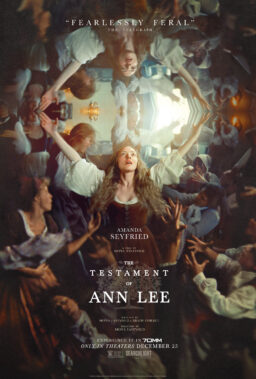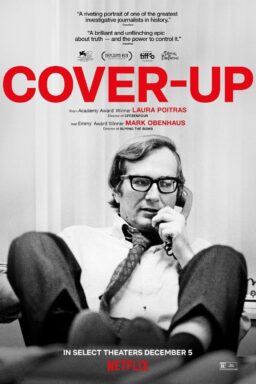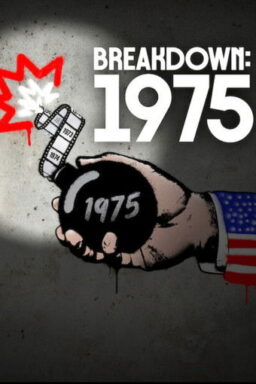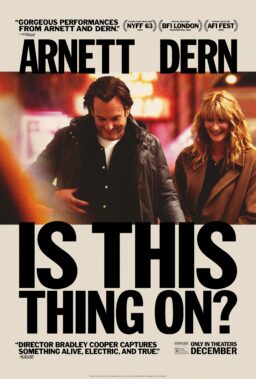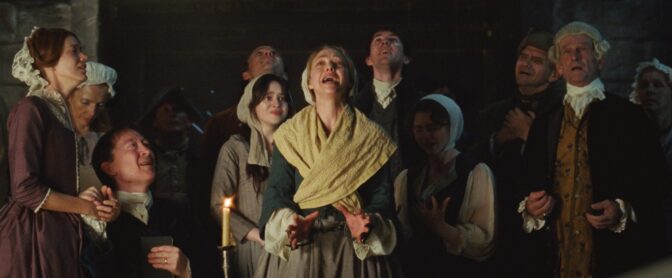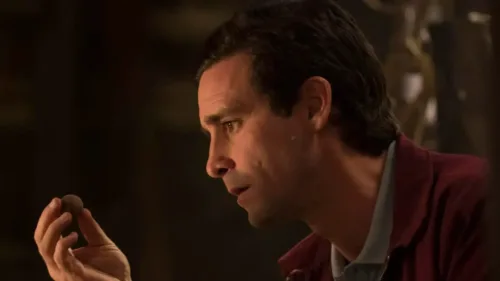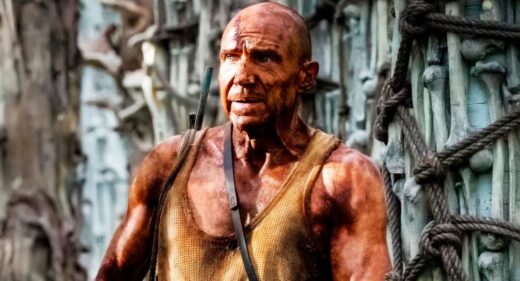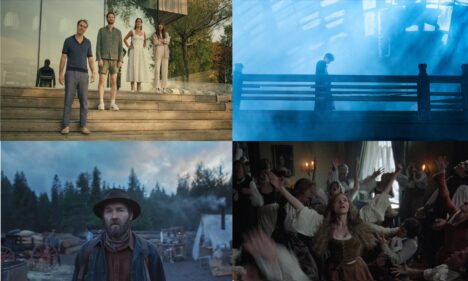2021’s hit “The Black Phone” didn’t feel quite sequel-ready. After all, the villain of the piece, Ethan Hawke’s child serial killer known as The Grabber, was killed by the hero at the end of the film. So what now? How about a film drenched in the visual language and even plot twists of the “Nightmare on Elm Street” franchise? Yes, the Grabber has basically become Freddy Krueger, and Scott Derrickson and writer C. Robert Cargill have delivered a confident, blood-drenched homage to one of the most popular horror franchises of all time, while injecting just enough of their own visual language and confident flair to make it feel like more than a mimic. It’s a tick too long and has a section that’s far too expository for a film that’s at its best when it leans into surreal nightmare logic, but this weird movie works its fear factor in unexpected, creative ways.
“Black Phone 2” takes place in 1982, a few years after Finney (Mason Thames) made national headlines as the only survivor and vengeful killer of the Grabber. The young man is understandably traumatized, and Thames captures the anger that sometimes comes from survivors, a rage that he takes out on other kids at school and the world around him, numbing his pain through marijuana, and trying to ignore the out-of-order ringing phones that keep trying to get his attention. Finney is a key part of this story, but it’s actually his sister Gwen (Madeleine McGraw) who drives the narrative this time. She starts having terrifying visions that feature mutilated children under frozen lakes, sketching letters into the ice above them. She also hears a phone in her nightmares, shot with a grainy quality that looks like ‘80s home movies. Derrickson and cinematographer Par M. Ekberg arguably overuse the technique, but it’s an effective way to capture Gwen’s dream state, making it look like she’s walked into a cursed recording found on a bootleg in an independent video store in 1985.
In one of Gwen’s visions, she answers a call and hears the young version of her mother on the other end. Years earlier, she was having visions of ice-bound children, too, and the mother and daughter connect over time and space, leading Gwen, Finney, and Gwen’s new boyfriend, Ernesto (Miguel Mora), to a winter camp that Mom was a counselor at in the ‘50s, known as Alpine Lake. The trio arrives in the middle of a blizzard, which means they’re basically alone with the camp supervisor (an excellent Demian Bichir), his niece Mustang (Arianna Rivas), and two camp employees. They try to figure out what Mom and Gwen’s visions are trying to tell them about this place and discover how it connects to the legend and possibly the continued threat of the Grabber.
“Black Phone 2” is messed up in ways that big-budget movies from major studios are rarely allowed to be. Gwen’s visions are legitimately terrifying, including images of children traumatized by violence. The first one she has after arriving at the camp is true nightmare fuel, including a shot of a face cut in half by window glass that continues to move. So many major studio horror films are sanded down to innocuous nonsense by producers’ notes and focus groups, which makes the risks that this one takes all the more admirable. Derrickson knows how to frame and pace a movie like this one, pushing the narrative forward with memorably terrifying images. There’s a sequence with Finn in a phone booth with a snowy tundra behind him that becomes dotted with lost souls, revealed as the camera spins around the booth, that’s one of his best, making us active participants through how the camera moves. He uses the forced perspective of the camera in ways that lesser filmmakers would never consider.
And there are two set pieces late that Craven would have adored—one in a kitchen in which the Freddy/Grabber connection becomes explicit for everyone, and one in a phone booth in which the Grabber attacks Gwen and things get bloody. It’s a movie steeped in ‘80s horror visual language and knowledge, but never one that feels like an echo as much as homage. It’s a fine line for genre fans, and some will see the blatant “Nightmare” connections here as sheer mimicry, but they don’t feel hollow to me. It takes talented filmmakers to understand how the themes and visuals of something like “Elm Street” movies work and make them their own instead of just echoing. They inject new life. Or maybe that should be death.
How do you take a story that not only felt like it ended but worked largely from the claustrophobia of a confined space and blow it up into the wide-open threat of a frozen tundra in a sequel? Derrickson and Cargill weren’t content to repeat the structure of the first film, blowing it up in a way that feels new without losing the connections and imagery from the first, while also injecting a remarkable dose of Catholic theology. It’s a film that’s not afraid to have a character who talks to Jesus for help and believes mom is in Heaven, which adds an unexpected layer of good vs. evil to the storytelling. Mostly, they derive a remarkable amount of tension from their snowed-in setting, even if they falter a bit when they feel the need to over-explain the characters’ history and the plot’s requirements. There’s a large section that’s basically just “here’s why we’re here and what we need to do,” when the film works best when it’s not explaining itself, when it allows its nightmare logic to rule.
Luckily, “Black Phone 2” recovers for an extended climax on the ice that’s remarkably conceived and executed. Fans old enough to remember reference points like “Curtains” and “Dream Warriors” will giggle at the audacity. Still, even the teenagers who have never heard of Freddy Krueger will find themselves engaged in the plight of the characters. After all, those young viewers don’t need Freddy now. They have the Grabber.
This review was filed from the world premiere at Fantastic Fest on September 21. It opens on October 17, 2025.

